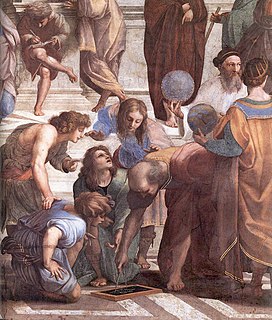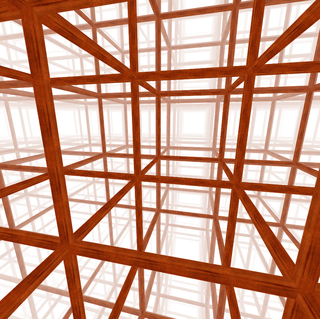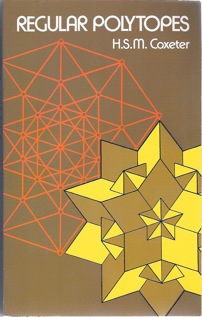In four-dimensional Euclidean geometry, the rectified 24-cell honeycomb is a uniform space-filling honeycomb. It is constructed by a rectification of the regular 24-cell honeycomb, containing tesseract and rectified 24-cell cells.
In four-dimensional Euclidean geometry, the truncated 16-cell honeycomb is a uniform space-filling tessellation in Euclidean 4-space. It is constructed by 24-cell and truncated 16-cell facets.
In four-dimensional Euclidean geometry, the rectified tesseractic honeycomb is a uniform space-filling tessellation in Euclidean 4-space. It is constructed by a rectification of a tesseractic honeycomb which creates new vertices on the middle of all the original edges, rectifying the cells into rectified tesseracts, and adding new 16-cell facets at the original vertices. Its vertex figure is an octahedral prism, {3,4}×{}.
In four-dimensional Euclidean geometry, the bitruncated tesseractic honeycomb is a uniform space-filling tessellation in Euclidean 4-space. It is constructed by a bitruncation of a tesseractic honeycomb. It is also called a cantic quarter tesseractic honeycomb from its q2{4,3,3,4} construction.
In four-dimensional Euclidean geometry, the stericantellated tesseractic honeycomb is a uniform space-filling honeycomb.
In four-dimensional Euclidean geometry, the omnitruncated tesseractic honeycomb is a uniform space-filling honeycomb. It has omnitruncated tesseract, truncated cuboctahedral prism, and 8-8 duoprism facets in an irregular 5-cell vertex figure.
In four-dimensional Euclidean geometry, the truncated tesseractic honeycomb is a uniform space-filling tessellation in Euclidean 4-space. It is constructed by a truncation of a tesseractic honeycomb creating truncated tesseracts, and adding new 16-cell facets at the original vertices.
In four-dimensional Euclidean geometry, the cantellated tesseractic honeycomb is a uniform space-filling tessellation in Euclidean 4-space. It is constructed by a cantellation of a tesseractic honeycomb creating cantellated tesseracts, and new 24-cell and octahedral prism facets at the original vertices.
In four-dimensional Euclidean geometry, the runcinated tesseractic honeycomb is a uniform space-filling tessellation in Euclidean 4-space. It is constructed by a runcination of a tesseractic honeycomb creating runcinated tesseracts, and new tesseract, rectified tesseract and cuboctahedral prism facets.
In four-dimensional Euclidean geometry, the cantitruncated tesseractic honeycomb is a uniform space-filling tessellation in Euclidean 4-space.
In four-dimensional Euclidean geometry, the runcitruncated tesseractic honeycomb is a uniform space-filling tessellation in Euclidean 4-space.
In four-dimensional Euclidean geometry, the steritruncated tesseractic honeycomb is a uniform space-filling tessellation in Euclidean 4-space.
In four-dimensional Euclidean geometry, the runcicantitruncated tesseractic honeycomb is a uniform space-filling tessellation in Euclidean 4-space.
In four-dimensional Euclidean geometry, the runcicantellated tesseractic honeycomb is a uniform space-filling tessellation in Euclidean 4-space.
In four-dimensional Euclidean geometry, the stericantitruncated tesseractic honeycomb is a uniform space-filling honeycomb. It is composed of runcitruncated 16-cell, cantitruncated tesseract, rhombicuboctahedral prism, truncated cuboctahedral prism, and 4-8 duoprism facets, arranged around an irregular 5-cell vertex figure.
In four-dimensional Euclidean geometry, the steriruncic tesseractic honeycomb is a uniform space-filling tessellation in Euclidean 4-space.
In four-dimensional Euclidean geometry, the stericantic tesseractic honeycomb is a uniform space-filling tessellation in Euclidean 4-space.
In four-dimensional Euclidean geometry, the cantitruncated 24-cell honeycomb is a uniform space-filling honeycomb. It can be seen as a cantitruncation of the regular 24-cell honeycomb, containing truncated tesseract, cantitruncated 24-cell, and tetrahedral prism cells.
In four-dimensional Euclidean geometry, the bitruncated 24-cell honeycomb is a uniform space-filling honeycomb. It can be seen as a bitruncation of the regular 24-cell honeycomb, constructed by truncated tesseract and bitruncated 24-cell cells.
In four-dimensional Euclidean geometry, the steritruncated 16-cell honeycomb is a uniform space-filling honeycomb, with runcinated 24-cell, truncated 16-cell, octahedral prism, 3-6 duoprism, and truncated tetrahedral prism cells.
















